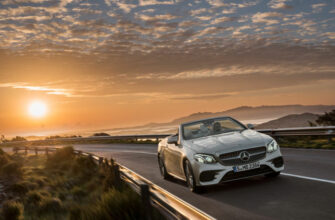In 2014 auto companies invested $105 bln in R&D. Auto industry takes the third place in the list of the biggests investors to innovations (its share is 16%). It is surpassed by electronics (share 26%) and health industry (21% share).
Marketing is the main driving force of auto investments, otherwise it is a desire to satisfy consumers. At the same time, the companies have different strategies: 40% identify needs and satisfy them, 23% monitor the trends and offer to existing products a little more functionality, 37% strive to create new consumer trends themselves, launching new products.
According to consumers’ surveys provided for USA, over 50% of drivers treat active safety systems as the most important, 45% give priority to fuel economy, communication capabilities (or varity of connections) are among TOP-5 of the most desired options.
Active safety systems
The objective of the efforts in development of active safety systems should be trouble-free transportation of people and goods with a help of all-automatic driving. As it is expected, vehicles with partial autopilot will arrive in 2015-2016, while full-featured units will be unveiled till 2025. By IHS, after 2050 almost all vehicles will be autonomous. Now BMW, Ford, GM, Daimler, Toyota, and Volkswagen already integrate auto pilot system in vehicles and pilot launch is expected in 2016 in premium-segment. Not to mention Google, which tests auto pilot concept from 2009. Its mileage is over 700’000 miles now. Tesla Motors – electic car maker, wants auto pilot to make 90% of driving actions by 2016.
Systems of active safety, implemented during the last several years, more recently were treated as subject of long-term prospective or fantasy. For example, night vision and all-round camera, adaptive cruise control on the road and in traffic-jam, recognition of stress and driver fatigue and so on. But progress goes on and new system launches were announced:
- Laser headlights and light beam control by the driver’s view
- Gestural control of the vehicle
- Recognision of speed bumps
- Emergency maneuvering, preparation for side impacts and protection of passengers’ hearing
- Autonomous driving on the highway, through the intersections and multiband rebuild
- Remote parking and feeding machine
- System of communication vehicle-vehicle (V2V) and vehicle-infrastructure (V2I), which allows to obtain information about the situation on the road, availability of parking spaces, the lights
Systems of autonomous driving are seeing for developpers not for reducing accidents and comfort improving, but as instrument of improving the efficiency of the transport system. Auto makers (for example, Toyota) collaborate with state authorities in R&D.
Fuel economy
Diversification of energy sources is an object for the mentioned researches. Otherwise it means usage of alternatives and economy of natural resources. At present the auto companies reasearch the following topics:
- Elaboration of gas engines, nitroethanol fuel, hydrogen and electricity.
- Compact high-voltage batteries and their contactless recharging. It is expected, that by 2020 price of the batteries will drop to $200/kW (contactless with petrol price at 3.5$/gallon; the vehicles with batteries at $250/kW will already be competitive by cost of ownership for 5 year prospect).
- Relief bearing structure of the car, combining steel, alumina, aramids ans carbon fiber. Hybrid body construction affords to lower vehicle’s weight and at the same time to decrease fuel consumption and CO2 pollutions.
- Development of gasoline and diesel engines, decreasing engine volumes, turbo facilities (electric compressors, 4 turbines), water injection system (BMW), creation and improvement of hybrid systems of different types.
- Improved aerodynamics and elaboration of wheels with low rolling resistance.
Care of improving fuel efficiency and protection of environment forces governments to set new standards in mentioned fields, makes manufacturers to invest in light materials, economy or ecological engines, in the use of alternative energy sources.
Communication capabilities
Result of the efforts towards communication preferences is transformation of vehicle in somewhat about computer, but equipped by driving function. Any other function may be reached by software installation.
Trend in communication preferences may be discribed as transfer of consumer habits from consumer electronics to auto industry. The consumer thus requires communication devices inside and outside of the vehicle, and expects quick update of management technologies. Upon experts estimation, by 2020 auto software market will grow from €30 billion up to €170 billion. The growing role of digital technolohies increases role of the factor in the choice decision. In this field specimen work of Tesla, Google and Apple must be noted.
In addition, researches determined new trend in vehicle consumption, caused by hyperurbanism – refuse from vehicle ownership in favor of public transport or new forms of consumption. Response to new needs is short-term leasing (car-sharing, ride-sharing and so on). Now almost all leading manufacturers test this kind of service, trying to analyze the prospects of this trend.




